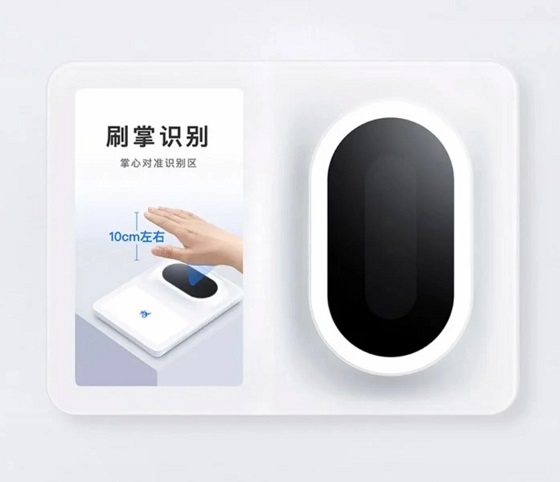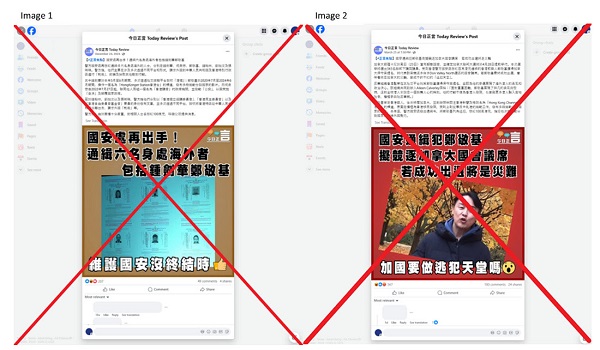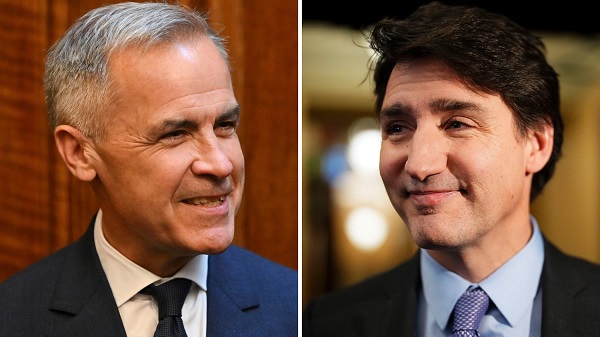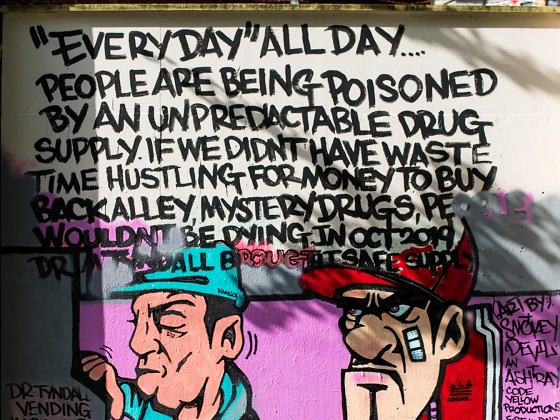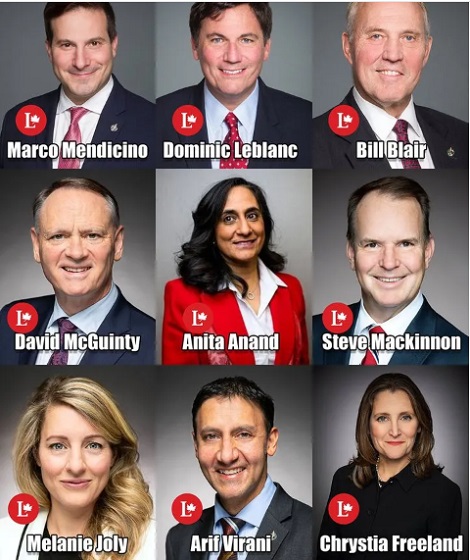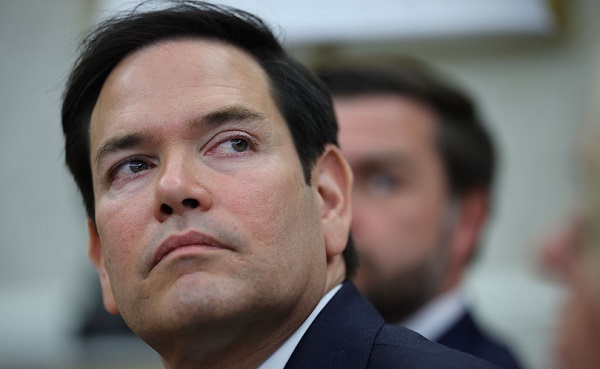Bruce Dowbiggin
They Were Who We Thought They Were. And Trump Let Them Off The Hook
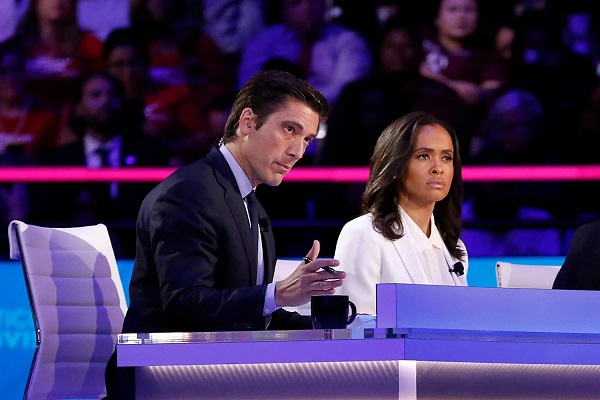
In sports it’s well-known that if you’re complaining about refereeing you must have lost. Judging by the tsunami of criticism launched by Republicans at ABC News’s moderators after Tuesday night’s presidential debate it would tell you that Donald Trump lost his first— and likely only—debate with Kamala Harris.
“Three against one” was the persistent complaint about the work of ABC’s David Muir and Linsey Davis. And you could make the case for that criticism. A media analysis of ABC’s leftist news coverage before Tuesday showed that it gave Harris positive coverage 95 percent of the time, while Trump received just six percent positive coverage (most dedicated to his being shot). Further, Harris is a close pal of the woman who runs ABC News. Davis is Harris’ sorority sister. Really? Where were Trump or viewers informed of these conflicts?
Muir thought moderator meant fact-checker and inserted himself by debating Trump on his claims. On at least a half dozen occasions an unctuous Hume debated Trump about, among the topics, the eating of family pets by Haitian immigrants in towns and cities overrun by migrants. (A claim supported by Ohio’s attorney general.)
Snippy co-moderator Davis challenged Trump’s assertion that Harris was in favour of unlimited abortion until the moment of delivery (Davis was wrong) and then quickly moved on to softball Harris. Fair enough, if you or your bosses think your job is to correct in real time the assertions of the politicians.
Except they never upbraided Harris on a series of her own whoppers that have clearly been debunked. (“Fine people”, “bloodbath”, etc.) With that comfort zone, Harris lost her jitters and avoided mistakes. It was now a home game. Hence the chorus of “Unfair” that followed.
But let’s be honest, what was Trump expecting? This was Trump’s charge of the Light Brigade expecting another outcome. After the past decade, making a headlong charge into cannons is not a wise career move. But like the doddering generals of the 1850s British Army, an aging Trump has reached peak self delusion after dodging a bullet himself this summer. He is like the psychotic Maggott character Telly Savalas played in Dirty Dozen. Everything is going well on the mission till he sees a German woman he likes. Then he abandons the script. And hell breaks loose.
Sadly, his lieutenants now do a better job articulating his talking points these days. (It wouldn’t be a surprise if the GOP let RFK Jr. and VP candidate J.D. Vance do the more talking from here on in.)
Whether this debate was a missed opportunity or a campaign turning point will be decided in the coming weeks. For those who think it’s going to change the polls, remember that Biden’s epic debate meltdown from June only cost him a couple of points in popularity. Trump advanced but one point. Still, the DEMs panicked in June, launching a coup against the man who’d overwhelmingly won the primaries. (Mirror to January of 2017 when they launched a three-year attempted coup to remove Trump.)
Trump mentioned Harris not getting any primary votes, but ABC wrinkled its nose at a real story, preferring to delve into how Trump’s father made money 50 years ago. What was definitive about Tuesday is that the DC Media Party is again in the tank. The son of the President of the United States of America had just pled guilty to tax evasion for bribes he received from foreign adversaries in exchange for selling access to his father, the vice president at the time. This should have been the first, last and every question from ABC’s Mod Squad. Nope, let’s talk about E. Jean Carroll.
There’s no price to pay for burying uncomfortable stories. Example: Here’s John Kirby, spokesman for the Defence Dept., “Was anyone ever held accountable by the president directly for what happened with the withdrawal in Afghanistan?” KIRBY: “We have all held ourselves accountable…”
Oh good. Let’s move along. As Louisiana senator John Kennedy noted, “I know many people in Washington D.C. that would unplug your life support to charge their cell phone.” That explains a media mob that now talks openly of banning anyone who doesn’t sing from their anti-Trump hymn book..
This cheerleading has metastasized in the past generation. As veteran journalist Matti Friedman wrote this week on Substack in When We Started to Lie: “The practice of journalism—that is, knowledgeable analysis of messy events on Planet Earth—was being replaced by a kind of aggressive activism that left little room for dissent. The new goal was not to describe reality, but to usher readers to the correct political conclusion…
The activist-journalists, I found, were backed up by an affiliated world of progressive NGOs and academics who we referred to as experts, creating a thought loop nearly impervious to external information. All of this had the effect of presenting a mass audience with a supposedly factual story that had a powerful emotional punch and a familiar villain.”
What’s interesting is that no one in the U.S. has had to pay journalists to do this. In Canada the Trudeau federal government is taking no chances. It has taken to threatening media outlets it now supports through its media slush funds. Here’s Taleeb Noormohamed, parliamentary secretary to the Minister of Canadian Heritage dressing down a media critic who mentioned Noormohamed’s sketchy real estate flipping history,

. @Taleeb Your paper wouldn’t be in business were it not for the subsidies that the government that you hate put in place – the same subsidies your Trump – adjacent foreign hedge fund owners gladly take to pay your salary.” Translation: Nice little business you’ve got there. Too bad if something were to happen to it.
This behaviour has cowed many establishment journalists who, instead of carving Justin, write Trump thought-loop diatribes so they don’t get the Roman Polanski Chinatown nose surgery. (Nosy boy?”) Long, long after even the Dems have moved on from the most demented Trump fabrications the CDN media will still be slavishly regurgitating the pablum served to them by their heroes in American spy craft.

As such CBC newscasts are now time capsules of 2016 Think, indistinguishable from PMO press releases and leaks. We recently watched a newscast while in the lobby of the CBC building as the network adopted the missionary position on the latest Obamite Russia propaganda campaign. Followed by yet another deep swallow on Hottest Year on record. CBC had its senior reporter wheel out a single embedded “source” it’s used since the 1990s– w/o any conflicting “experts” as CBC reporting code requires– to re-varnish the narrative it has excreted since it decided that hot, not cold, would kill us all.
Unapologetic propaganda for imbecile liberals. That’s why it’s easier to blame the refs.
Bruce Dowbiggin @dowbboy is the editor of Not The Public Broadcaster A two-time winner of the Gemini Award as Canada’s top television sports broadcaster, he’s a regular contributor to Sirius XM Canada Talks Ch. 167. His new book Deal With It: The Trades That Stunned The NHL And Changed hockey is now available on Amazon. Inexact Science: The Six Most Compelling Draft Years In NHL History, his previous book with his son Evan, was voted the seventh-best professional hockey book of all time by bookauthority.org . His 2004 book Money Players was voted sixth best on the same list, and is available via brucedowbigginbooks.ca.
2025 Federal Election
Trump Has Driven Canadians Crazy. This Is How Crazy.

“Liberalism is based on one central desire: to look cool in front of others in order to get love. Preaching tolerance makes you look cooler than saying something like, ‘Please lower my taxes.’”— Greg Gutfeld
Having lived 25 years in the West after 45+ years in the East we can now generalize on the state of the nation. In the West the attitude is to grasp the future. Not fear it. Accept risk and loss as partners. In the East the default sentiment is to fear the future. Think of every reason why it might fail.
Quebec fears losing its culture. Ontario fears losing its power. The Maritimes fear losing equalization money. Hence Danielle Smith and Doug Ford as contrasting symbols of leadership. But 2025 is something new.
Donald Trump’s unsparing assessments of modern Canada— “We don’t really want Canada to make cars for us, to put it bluntly. We want to make our own cars — and we’re now equipped to do that”— have exposed this fissure in the country. Is it him or is it us? Families and friendships are being destroyed by the response. As Canadians head to the polls it’s obvious that persuasion is not going to apply in this climate. Arguments are falling on deaf ears.
With a large segment of the population doubling down on a failed past it’s time to make an I-told-you list of the implications of letting Donald Trump scare you into voting for a re-run of the Liberal Party. Double this dread if the Liberals get a majority.
To those Boomers living off the equity in their paid-off homes, get ready to be taxed on the appreciation in your homes. While you cherish your stand-alone private residence, get ready for the neighbours to sell out to someone who will erect a six-storey, 36-unit condo on the property right next to you because “sustainable growth”.
Got someone under 50 in your life? The Carney Reflex is bad news. Adding debt and embracing the destructive Trudeau social positions is a killer for those looking to commit to a future in Canada. Should Poilievre lose the election and his seat expect a brain drain away from the failed state. And the prosperity they create to vacate as well.
To those who cherish free expression expect hate-speech laws like those in UK where police will arrest you in your homes for social-media comment hostile to the ruling Party. And even if you shut down your posts watch out for neighbours who will exploit snitch lines to get you out of the hood.

Buttressing the party line, Carney will restore CBC’s funding— and then some— to drown out any social media pointing out the indelicate facts about his Trudeau-sourced cabinet members. He’ll also keep propping up failing private media, preventing them from bankruptcy so long as they spew DEI 24/7/365.
For those who cried fake tears over the Rez school graves scandal, watch Liberals pass legislation that gives unelected leaders of indigenous communities veto power over development of Crown Lands. Expect the Liberals, trying to maintain the NDP vote they assumed this year, to resurrect the “genocide” label against Canadians and fly flags at half mast again.

If you hoped to get to the bottom of innumerable scandals on the Liberals watch— ranging from eco-theft to China infiltration— Carney will put the clamps on any inquiry. The steady stream of Canada’s wealth to third-world kleptocrats will become a flood.
To those who thought Mark Carney had cancelled the consumer carbon tax, prepare yourself to find out that he just reduced it and will come back full-throttle as soon as the Conservatives fire Pierre Poilievre. While Carney plays the Housing Saviour he will also use the Carbon Tax to make concrete and fertilizer way more expensive, thus boosting the cost of the 50,000 homes he will never build and farm land will go fallow.
With CPC out of the way, expect no significant moves to end Canada as the money laundering capital of the world, the global fentanyl hub, international home to organized crime heads and a reported 1 in 7,800 residents as members of organized crime.
Batten down the hatches as Carney’s Liberals use their mandate to maintain the immigration deluge, thereby destroying Canada’s support systems for health, infrastructure and burying western values.

Get set for all your fossil-fuelled vehicles and heating to be taxed into oblivion with the proceeds going to more bike lanes, clogged public transportation on unreliable electric vehicles. Expect listening to obnoxious Quebec politicians brag on their “clean” hydro power.
Speaking of vehicles, the Sheila Copps set mocked Poilievre’s vision of urban hell where cops tell you not to protect your goods in a home smash-and-grab or car-jacking. With police ceding the field to organized gangs it will be open season as courts and the Liberals abandon the middle class to obey DEI imperatives.
And most of all, welcome to a full-fledged constitutional crisis sparked by Alberta and Quebec that will make the 1980s federal/ provincial rumbles look like Sunday school. Both will seek referendums from their voters on sovereignty or some equivalent. As we suggested last month the best case could be the UK model of regional parliaments. Saskatchewan and Alberta could join with indigenous communities to demand a regional say on how their revenues are distributed. Expect purchased media to humble brag for the ruling Liberals.

The worst outcome of Carney as PM is Alberta gaining independence or, gasp, joining America. Because Quebec can never get a better deal outside Canada expect them to use any momentum on sovereignty to extort further concessions from what’s left of Canada.
But why believe us? According to the report released in early 2025 by Policy Horizons Canada — the Government of Canada’s in-house think tank— upward social mobility could become a relic of the past, with wealth and opportunity increasingly inherited rather than earned. Their scenario outlines a country where rising inequality, inaccessible housing, and a broken promise of meritocracy leave younger generations disillusioned, disconnected, and doubtful that effort alone can improve their lives.
So with scant days left in the campaign the problem for Conservatives is not that the Liberal base believes Carney and their heroes. They’ve seen enough to know Mr. Burns is a fraud. But with their #TDS the true believers will never admit to backing a lying, losing hype train. That would be like death to them. So they’re closing their eyes and hoping it will all be over soon and they can go back to Mr. Dressup. Just know their kids will never forgive them.
Bruce Dowbiggin @dowbboy is the editor of Not The Public Broadcaster A two-time winner of the Gemini Award as Canada’s top television sports broadcaster. His new book Deal With It: The Trades That Stunned The NHL And Changed Hockey is now available on Amazon. Inexact Science: The Six Most Compelling Draft Years In NHL History, his previous book with his son Evan, was voted the seventh-best professional hockey book of all time by bookauthority.org. You can see all his books at brucedowbigginbooks.ca.
2025 Federal Election
How Canada’s Mainstream Media Lost the Public Trust
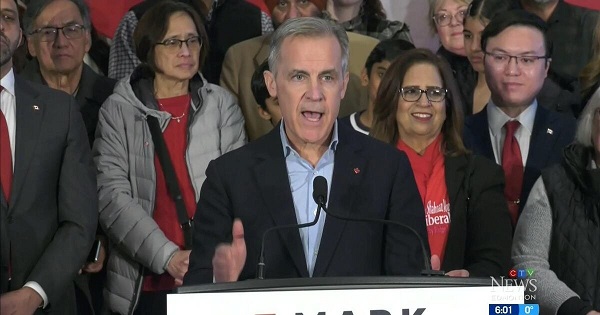
Breaking: CBC News admits that host Rosemary Barton was wrong on April 16 when she said “remains of indigenous children” have been discovered.
Call it the Panic Election. From The Handmaid’s Tale to Quebec alienation to plastic straws, the dynamic is citizens being stampeded in a brief six weeks by Big Brother. (There’s no Big Sister. That would mess with the narrative.) Prompting Covid Part Deux from the Laurentian media scolds.
Nowhere is this panic more keen than among aging Boomers who’ve pronounced themselves willing to ignore a decade of Justin Trudeau’s clumsy, unethical and sometimes criminal behaviour in the wake of Big Bad Trump. Even the threat of losing the country’s AAA credit rating can’t sway them from full-throated panic about being the 51st state.
The 51st state gambit is the window dressing. The real Trump panic is over him exposing the inadequacies of a Canadian society penetrated by China, dominated by globalist fanatics and more indebted every day. Specifically, Trump labelled Canadians defence dead-beats and entitled snobs who’d be crazy not to join the U.S. The insulting Trump framing has been a lifeline to those most recently in office— Liberals— to point at the Big Bad Wolf outside the door rather than the Frozen Venezuela inside its walls.
Integral to this panic is the role of Canada’s legacy media, a self-serving caste saved from bankruptcy (for now) by generous wads of public money. The 416/613 bubble ponies operate as if it were still 1985, not 2025. They’ve managed to preserve their status while society changed around them. For instance, CBC’s flagship At Issue panel features three people from Toronto and a fourth from Montreal.
It has worked perfectly in Boomer Canada. Until this past week, when the media guardians finally lost the plot. The combination of TV panel hubris and the incompetence of the Elections Commission exposed an industry more interesting in protecting its own turf than protecting the truth.
The meltdown was the notion that conservative social media— with its intrusive reporters and tabloid tactics— had no place in their sandbox. This hissy fit came after Wednesday’s French debate. Members of Rebel News, True North and other outfits dominated the party leaders’ scrums with obtrusive questions about Mark Carney’s opinions on same-sex sports and what constitutes a woman— questions the French moderator had neglected to ask.

For legacy reporters and hosts who take it as given that they be allowed the front pew this was an affront to their status. As purveyors of the one true political religion the talking heads on CBC, CTV and Global began speaking of “so-called journalists” and “far-right” intruders elbowing into their territory. Their resentment was all-consuming.
This resentment spilled into Debate Night Two when a shouting match ensued in the press room. A CBC source claimed (incorrectly) that Rebel Media leader Ezra Levant had been barred from the press room. A writer from the Hill Times screamed at members of their raucous rivals. The carefully chose panelists suggested that these outfits were funded by dark right-wing sources.
Before the debate had ended Elections Commission organizers— reportedly goaded by the Liberals— called off the post-debate scrum citing “safety” issues that seemingly included a Rebel reporter conducting a hostile walking interview with a furious Liberal official. This unleashed another torrent of Media Party vitriol about its position as the keepers of Canadian journalism.

In a show of irony, these complaints about right-wing misinformation came from people whose livelihood is dependent on Liberal slush funds or whose organizations have accepted government funds to stave off bankruptcy or whose union is an active shill for non-Conservative parties. The conflicts are never mentioned in the unctuous festival of privilege.
What makes this rearguard action against new media risible was the 2024 U.S. election where Donald Trump acknowledged the new day and rode the support of non-traditional media back to the presidency. His shunning of the legacy networks and hallowed print brands heralded a new reality in American elections. Poilievre has struggled to find this community in Canada, but for those with eyes it remains the future of disseminating political thought.
A perfect example of alternative media scooping the tenured mob on Parliament Hill has been the sterling work on China by Sam Cooper, a former Global employee who has independently demonstrated the ties between Chinese criminal gangs and the Canadian political structure going back to the 1980s. Working with others outside the grid he’s shown the scandal of a Liberal candidate urging Chinese Canadian voters to reap a bounty for turning his Conservative opponent to the Chinese Communist Party. A disgrace that Carney has forgiven.
Predictably Cooper’s work and the independent story by two retired RCMP investigators who implicated nine Liberal cabinet members in compliance with the Chinese communists has gotten the ‘tish-tish” from the Laurentian elites. Like the Democrats who buried the Hunter Biden laptop story to save his father in the dying days of the 2020 U.S. election the poodle media hope to delay the truths about China long enough to get the compliant Carney over the finish line.
For contrast to how it was— and could be— one only had to witness the moderator performance of journalist Steve Paikin of TVO. Largely unknown outside Ontario, Paikin overcame the skepticism of Westerners by playing it straight down the middle. Such was his honest-broker performance that Poilievre was heard telling him after the debate that he had no idea how Paikin might vote. (Ed. note: Paikin is a former colleague and longtime friend.) In other words, it’s still possible.
It’s a cliché that this election is a hinge point for Canada. Will it face itself in the mirror or indulge in more denialism about its true self? No wonder unaffiliated journalists joke that their stories today will be the lead on mainstream media in three months. Carney has promised to continue bribing the mainstream media, but their day is done. It’s simply a matter of fixing a date for the next panic.
Bruce Dowbiggin @dowbboy is the editor of Not The Public Broadcaster A two-time winner of the Gemini Award as Canada’s top television sports broadcaster. His new book Deal With It: The Trades That Stunned The NHL And Changed Hockey is now available on Amazon. Inexact Science: The Six Most Compelling Draft Years In NHL History, his previous book with his son Evan, was voted the seventh-best professional hockey book of all time by bookauthority.org. You can see all his books at brucedowbigginbooks.ca.
-

 2025 Federal Election2 days ago
2025 Federal Election2 days agoThe Anhui Convergence: Chinese United Front Network Surfaces in Australian and Canadian Elections
-
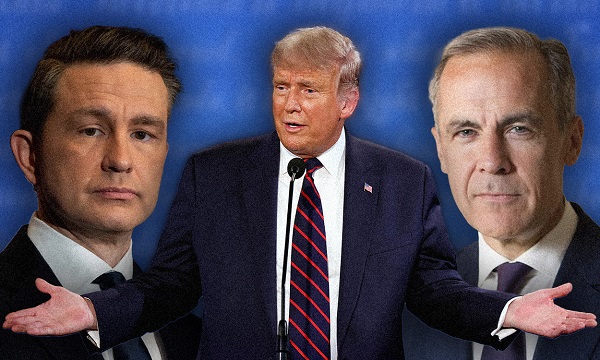
 2025 Federal Election2 days ago
2025 Federal Election2 days agoPolls say Canadians will give Trump what he wants, a Carney victory.
-

 2025 Federal Election2 days ago
2025 Federal Election2 days agoTrump Has Driven Canadians Crazy. This Is How Crazy.
-
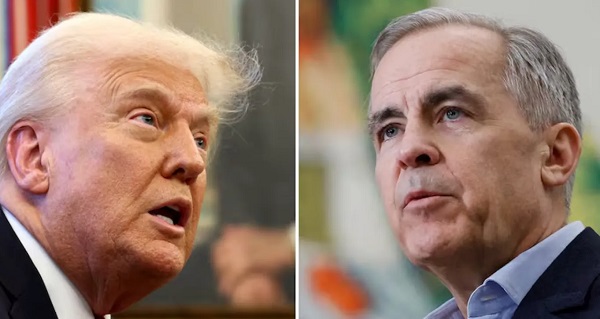
 2025 Federal Election2 days ago
2025 Federal Election2 days agoCarney Liberals pledge to follow ‘gender-based goals analysis’ in all government policy
-
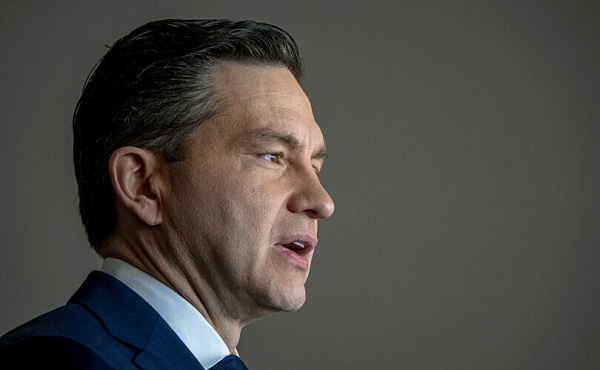
 2025 Federal Election2 days ago
2025 Federal Election2 days agoPoilievre’s Conservatives promise to repeal policy allowing male criminals in female jails
-
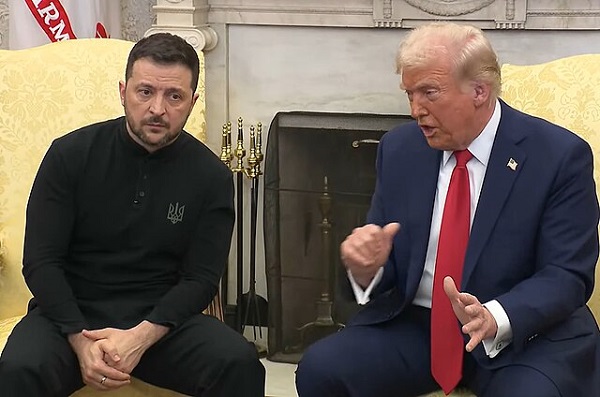
 conflict2 days ago
conflict2 days agoTrump tells Zelensky: Accept peace or risk ‘losing the whole country’
-

 2025 Federal Election1 day ago
2025 Federal Election1 day agoPoilievre Campaigning To Build A Canadian Economic Fortress
-

 Automotive1 day ago
Automotive1 day agoCanadians’ Interest in Buying an EV Falls for Third Year in a Row
